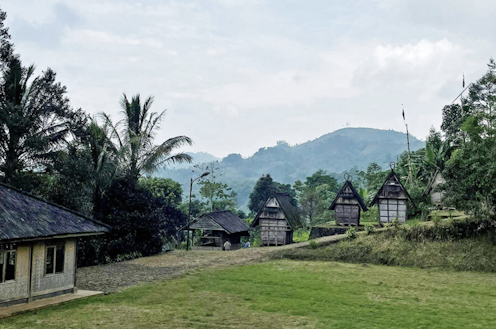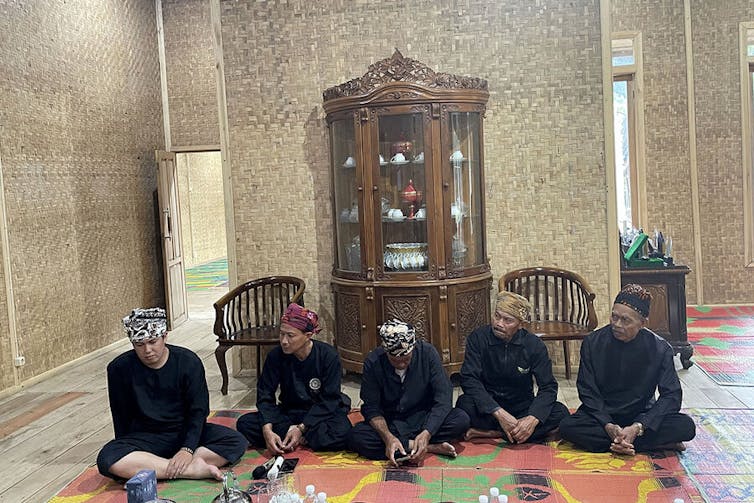
Kalpana Jain, senior religion and ethics editor at The Conversation, spent part of 2023 on a trip spanning over 20,000 miles, covering seven cities in three countries, as an East-West Center 2023 Senior Journalists Fellow to pursue issues around the role of religion and identity in the public sphere. On this trip, which included traveling near the border of Myanmar, Jain interviewed representatives from Indigenous communities, minority faith groups, journalists and activists, among many others. She reported on the rise in Buddhist and Hindu nationalism as well as the role of faith groups in promoting peace and care for the environment.
A 2009 Nieman Fellow at Harvard, Jain pursued many social justice issues as a journalist at The Times of India. Her reporting in India led to many policy changes in the public health sector and won several awards. In 2019, she received a Pulitzer grant to pursue issues around rising Hindu nationalism in India. Jain has also worked as an editor, writer and researcher at Harvard University. Her case study on modern-day slavery is part of a Harvard course, and her book on the AIDS epidemic in India is taught at many Indian universities. She holds a master’s in theological studies from Harvard Divinity School and a master’s in public administration from Harvard Kennedy School.
The piece below on the Indigenous community in Indonesia, first published in the Christian Science Monitor on Oct. 10, 2023, shows the depth of expertise on The Conversation team on global issues involving religion, ethics and the impact of colonialism in today’s world. The Conversation is very proud to share it.
CISUNGSANG VILLAGE, INDONESIA: Once isolated from the rest of the world, the Kasepuhan Cisungsang – an Indigenous community in Indonesia – has been inviting outsiders to get a glimpse into their lives.
Their village rests at the foot of Mount Halimun in western Java, a six-hour drive from the bustling megalopolis of Jakarta. When visitors arrive, a band of musicians dressed in flowing black robes and colorful headdresses greet them by playing the angklung, a traditional bamboo instrument, while young girls dance. The guests are shepherded into a spacious hut where a Kasepuhan Cisungsang representative explains that the community is led by the abah, or father, and that they’ve lived in this forested area since before Dutch colonization.
“Our ancestors have left us a message to protect and defend the environment,” says Raden Angga Kusuma, the abah’s eldest son and crown prince of the village.
Indonesia is home to an estimated 50 million to 70 million Indigenous individuals, or nearly 20% of the country’s population. However, Indigenous communities’ claims to their homeland are precarious, often hinging on a community’s ability to convince local authorities of their Indigeneity. Add to that pervasive stereotypes about Indigenous communities being anti-development or stuck in the past, and the challenge for many of the archipelago’s Indigenous leaders becomes retaining their traditional culture and customs while also evolving with the times. For the Kasepuhan Cisungsang, opening to visitors is part of that strategic thinking.
Through a translator, Kasepuhan Cisungsang elder Apih Jakar shares another saying from their ancestors: “Cope with the dynamics of time and adapt with it.”
Battle over land
For the Kasepuhan Cisungsang and the 56 other Kasepuhan groups living in the Halimun Salak area of Java, the battle for land rights dates back to the 19th century, when Dutch settlers failed to acknowledge the communities living in and around present-day Mount Halimun Salak National Park. The colonizers’ demarcations and land practices persisted after independence in 1945. Under Suharto, Indonesia’s second president, Indigenous land was converted into state forests and redistributed as private concessions to rubber, mining and palm oil companies.
Throughout the Suharto era “the Indonesian government argued that the country had to catch up and needed to achieve higher rates of growth,” says Timo Duile, an anthropologist at the University of Bonn who has spent years researching land rights in Indonesia. “That could be done by cooperation with the West and by opening the country to foreign capital. … Land was an important issue that created a lot of conflicts.”
It wasn’t until 2013 that a historic ruling known as MK35 provided Indigenous people the opportunity to reclaim ancestral land. However, this has proved to be a long and complicated process.
An independent mapping initiative has recorded over 50 million acres of Indigenous land in Indonesia, but only 15% has been recognized by the government. Critics blame the bottleneck on slow bureaucracy, poorly implemented and conflicting forest laws, and corporate land-grabbing.
But the first hurdle many communities face is proving their roots.
Proving Indigeneity
A community’s Indigeneity must be recognized by an administrative unit in a province, known as a kabupaten.
A group can qualify if they have markings as an Indigenous people, such as following customary laws and retaining unique social institutions, says Muhammad Arman, director of advocacy for policy, law and human rights at Aliansi Masyarakat Adat Nusantara, or the Indigenous Peoples Alliance of the Archipelago. But many kabupatens have ill-defined regulations, and proving Indigeneity can depend on the whims of local politicians.
“If you wear modern clothes, the government can say you have changed socially and culturally and therefore are no longer a member of an Indigenous community,” says Arman. Legal recognition is also no guarantee that a community’s wishes will be respected.
Mama Rosita Tecuari is one of several leaders from the Namblong Indigenous community in Papua province fighting to defend their land from the expansion of a palm oil plantation. A company got the license and a permit to use the land without any consent from the 500 tribes settled there, says Tecuari. Even after local laws recognized the Namblong community’s right to the land in 2021, the company has not retreated.

“It’s not that we don’t want development,” she says, they just don’t want it to come at the expense of the environment. “We in Papua think of forests as our own hearts. If you clear our forests, it is the same as killing us.”
Still, for Indigenous groups to have a shot at local autonomy, they must show that they retain their Indigeneity. “To get land rights, they have to prove continuity between past and present with Indigenous institutions and Indigenous laws,” says Duile. “They can be in a process of change but have to convince officials that they are the same.”
History of transformation
That emphasis on continuity means that Indigeneity can get conflated with primitiveness, says scholar Rebakah Daro Minarchek of the University of Washington.
For her 2019 dissertation, Rebakah Daro Minarchek spent years studying how three Kasepuhan communities, including Kasepuhan Cisungsang, were embracing technology.
After the central government brought the internet to Ciptagelar village through a universal connectivity program and built a TV station and a radio station, villagers trained youth to interview elders on traditions and record their musicians. One village leader even turned to YouTube videos to teach himself how to use GPS technology to map land boundaries.
Daro Minarchek also observed Ciptagelar village send two young men to Japan to learn how to do commercial gardening and increase productivity. Many Indigenous communities are hesitant about certain kinds of education that distance youth from the community, she explains, but they don’t look down on education.
In the case of Kasepuhan Cisungsang, the crown prince and a few others have been allowed to go to a university under the condition they will return to their village and their way of life.
In recent years, the village has also invited international visitors to attend an annual harvest festival, known as Seren Taun, a thanksgiving ceremony for all the blessings received during the year. The tradition was captured in a 2016 short documentary called “Harvest Moon Ritual.”
This adaptation isn’t new, Daro Minarchek notes, pointing to the community’s religious practices. The Kasepuhan Cisungsang currently practices Islam but incorporates it with ancestral practices, including shamanic animism, along with Hindu and Buddhist practices.
“To say that this is a community from 700 years ago that hasn’t caught up to the future is dehumanizing,” says Daro Minarchek.
This article was originally published on The Conversation. Read the original article.







